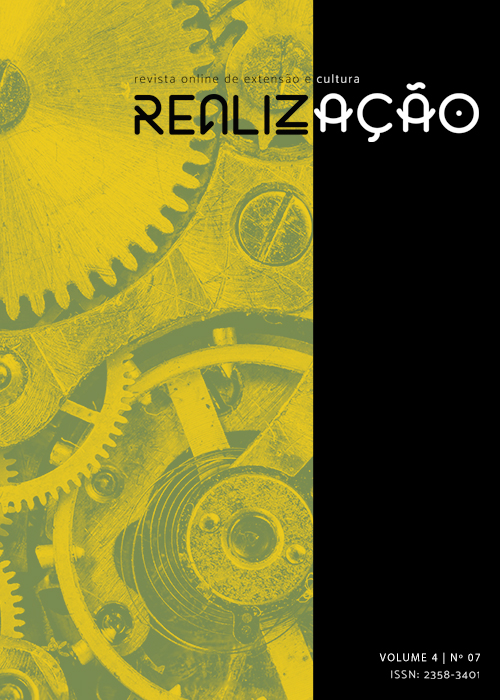Assessment of ergonomic risks during dental work: a case study
Keywords:
Posture , Ergonomic risks , Occupational health , Work safetyAbstract
The objective of this study was to analyze the perception and discourse on ergonomics, as well as the main posture problems during dental care by a dentist. To analyze the dentist's perception and discourse, the Free Word Association Test (FAT) was used, together with the analysis of the Collective Subject Discourse (CSD); to assess the occurrence of discomfort/pain, the Corlett diagram and observations and photographic records of the professional's working conditions during the care were used. However, it was found that the professional recognizes the ergonomic risks and the preventive and mitigating measures, but he does not effectively put them into practice. In addition, it was found that the dentist already has problems, mainly in the cervical region, shoulders and legs, and left neck and wrist. Observations of the images indicated that the professional often forgets the ergonomic principles and ends up adopting inappropriate postures that are risky for his health. Thus, it was found that the use of different tools also allowed for a careful analysis of dental care.
Downloads
References
APPOLINÁRIO, F. Metodologia da ciência: filosofia e prática da pesquisa.São Paulo: Pioneira Thomson Learning, 209 p., 2006.
COSTA, F. O. C.; PIETROBON, L.; FADEL, M. A. V.; FILHO, G. I. R. Doenças de caráter ocupacional em cirurgiões-dentistas: uma revisão da literatura. In: ENCONTRO NACIONAL DE ENGENHARIA DE PRODUÇÃO, 26, 2006, Fortaliza / CE. Anais...Fortaleza, 2006, p. 1-7.
FERREIRA, N. F. Princípios ergonômicos e o cirurgião dentista: uma avaliação do acadêmico e do profissional. 2009. 88 f. Tese (Doutorado em Odontologia Preventiva e social) -Faculdade de Odontologia de Araçatuba, Universidade Estadual Paulista, Araçatuba, 2009.
GARBIN, A. J. I.; GARBIN, C. A. S.; FERREIRA, N. F.; SALIBA,N. T. A. Ergonomia e o cirurgião-dentista: uma avaliação do atendimento clínico usando análise de filmagem. Revista Odonto Ciência, v. 23, n. 2, p. 130-33, 2008.
GARBIN, A. J. I.; GARBIN, C. A. S.; DINIZ, D. G. Normas e diretrizes ergonômicas em odontologia: o caminho para a adoção de uma postura de trabalho saudável. Revista de Odontologia da Universidade Cidade de São Paulo, v. 21, n. 2, p. 155-61, 2009.
INTERNATIONAL STANDARDS ORGANIZATION-ISO. ISO-TC 106/SC 6 N° 411:2006 ExigÊncias Ergonômicas para equipamento odontológico. Diretrizes e recomendações para projeto, construção e eseleção de equipamento odontológico. 2006
JESUS, L.F.; MARINHA, M.S.; MOREIRA, M.F.R. Distúrbios osteomusculares em cirurgiões-dentistas: uma revisão de literatura. Revista Uniandrade, v. 11, n. 1, p.75-88, 2010.
LEFÈVRE, F.; LEFÈVRE, A.M.C. O discurso do sujeito coletivo: um novo enfoque em pesquisa qualitativa (desdobramentos).Caxias do Sul: Editora Educs, 256 p., 2005.
MAIA, I. M. O. Avaliação das condições posturais dos trabalhadores na produção de carvão vegetal em cilindros metálicos verticais.2008. 91 f. Dissertação (Mestrado em Engenharia da Produção) –CEFET, PR, 2008.
NÓBREGA S.M.N., COUTINHO M.P.L. O teste de associação livre de palavras. In: Coutinho MPL. Representações sociais: abordagem interdisciplinar. João Pessoa (PB): Universitária UFPB, 2003.
PERIM, I. P. Ergonomia para os mobiliários de salas clínicas dos cirurgiões dentistas.2008. 39 f. Trabalho de Conclusão de Curso (Especialização em Arquitetura em Sistemas de Saúde) –Universidade Federal da Bahia, BA, 2008.
PRESTES, A. S.; SILVA, F. P. Avaliação ergonômica do transporte e manuseio de formas de alumínio utilizadas para moldagem de paredes de concreto na construção civil.2009. 109 f. Trabalho de Conclusão de Curso (Especialização em Engenharia da Segurança do Trabalho) –Universidade Estadual de Ponta Grosso, PR, 2009.
SANTOS, V. M. V.; BASILIO, F. H. M.; BARRETO, R. R.; OLIVEIRA, E. S. Análise ergonômica das condições de trabalho dos dentistas: uma comparação entre a rede pública e o setor privado. In: ENCONTRO NACIONAL DE ENGENHARIA DE PRODUÇÃO, 27, 2007, Foz do Iguaçu / PR. Anais...Foz do Iguaçu, 2007, p. 1-9.
WERNER, L.; LINDEN, J. C. S. V. D; RIBEIRO, J. L. D. Análise da percepção sobre assentos de trabalho utilizando técnicas estatísticas multivariadas. Revista Produção, v. 13, n.3, p. 34-49, 2003.
YARID, S.D.; DINIZ, D.G.; ORENHA, E.S.; ARCIERI, R.M.; GARBIN, A.J.I. Aplicação de princípios de ergonomia no atendimento odontológico. Interbio, v. 3, n. 2. p. 11-7, 2009.
Downloads
Published
How to Cite
Issue
Section
License
Copyright (c) 2017 Luis Cesar Giansante Tonello, Emerson Machado de Carvalho

This work is licensed under a Creative Commons Attribution-NonCommercial-ShareAlike 4.0 International License.
Autores que publicam nesta revista aceitam as normas de publicação, bem como, concordam com os seguintes termos:
(a) O Conselho Editorial se reserva ao direito de efetuar, nos originais, alterações da Língua portuguesa para se manter o padrão culto da língua, respeitando, porém, o estilo dos autores.
(b) Autores mantêm os direitos autorais e concedem à revista o direito de primeira publicação, com o trabalho simultaneamente licenciado sob a Creative Commons Atribuição-NãoComercial-CompartilhaIgual 4.0 Internacional que permite: Compartilhar — copiar e redistribuir o material em qualquer suporte ou formato e Adaptar — remixar, transformar, e criar a partir do material. A Creative Commons Atribuição-NãoComercial-CompartilhaIgual 4.0 Internacional considera os termos seguintes:
- Atribuição — Você deve dar o crédito apropriado, prover um link para a licença e indicar se mudanças foram feitas. Você deve fazê-lo em qualquer circunstância razoável, mas de nenhuma maneira que sugira que o licenciante apoia você ou o seu uso.
- NãoComercial — Você não pode usar o material para fins comerciais.
- CompartilhaIgual — Se você remixar, transformar, ou criar a partir do material, tem de distribuir as suas contribuições sob a mesma licença que o original.
- Sem restrições adicionais — Você não pode aplicar termos jurídicos ou medidas de caráter tecnológico que restrinjam legalmente outros de fazerem algo que a licença permita.


